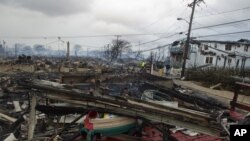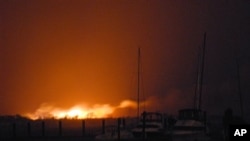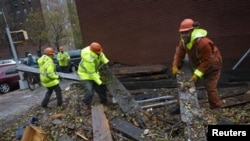NEW YORK —
Power is out for roughly 8 million east coast residents, but in New York, where debris-littered streets are mostly deserted and thousands remain in 76 city-run shelters, with dawn came a grim recognition of Sandy's impact.
"Sadly, the storm claimed the lives of people throughout the region, including at least 10 in our city, and, tragically, we expect that number to go up as information continues to come in," said Mayor Michael Bloomberg this morning at the Office of Emergency Management in Brooklyn. "And I do want to extend my condolences to all families who lost loved ones in the storm and ask all New Yorkers to keep them in their thoughts and prayers."
Story continues below
Story continues below
One of the worst natural disasters to hit the largest city in the United States, the devastation includes scores of fire-gutted homes, a flooded subway rail system, and badly damaged parks and shorelines. While Bloomberg warned residents that repairs cannot be done overnight and asked for cooperation, he said the city's priorities are restoring electricity and transportation.
Across the city, thousands of city workers and property owners are cleaning up.
"There is a lot of trees down all over," said one city sanitation worker as he busied himself clearing debris. "Anything we can manage to get rid of we are going to get rid of. You drive around you see how bad it is.”
New York State officials say it may take days – and in some cases weeks – until power is restored.
In neighboring New Jersey, Governor Chris Christie called the devastation unprecedented.
Wall Street was closed for a second day – the market's first two-day, weather-related shutdown in 124 years – and many business remain closed as the city recovers from what is considered the most damaging storm in its history.
The Story of Hurricane Sandy Told Through Pictures
The Story of Hurricane Sandy Told Through Pictures














